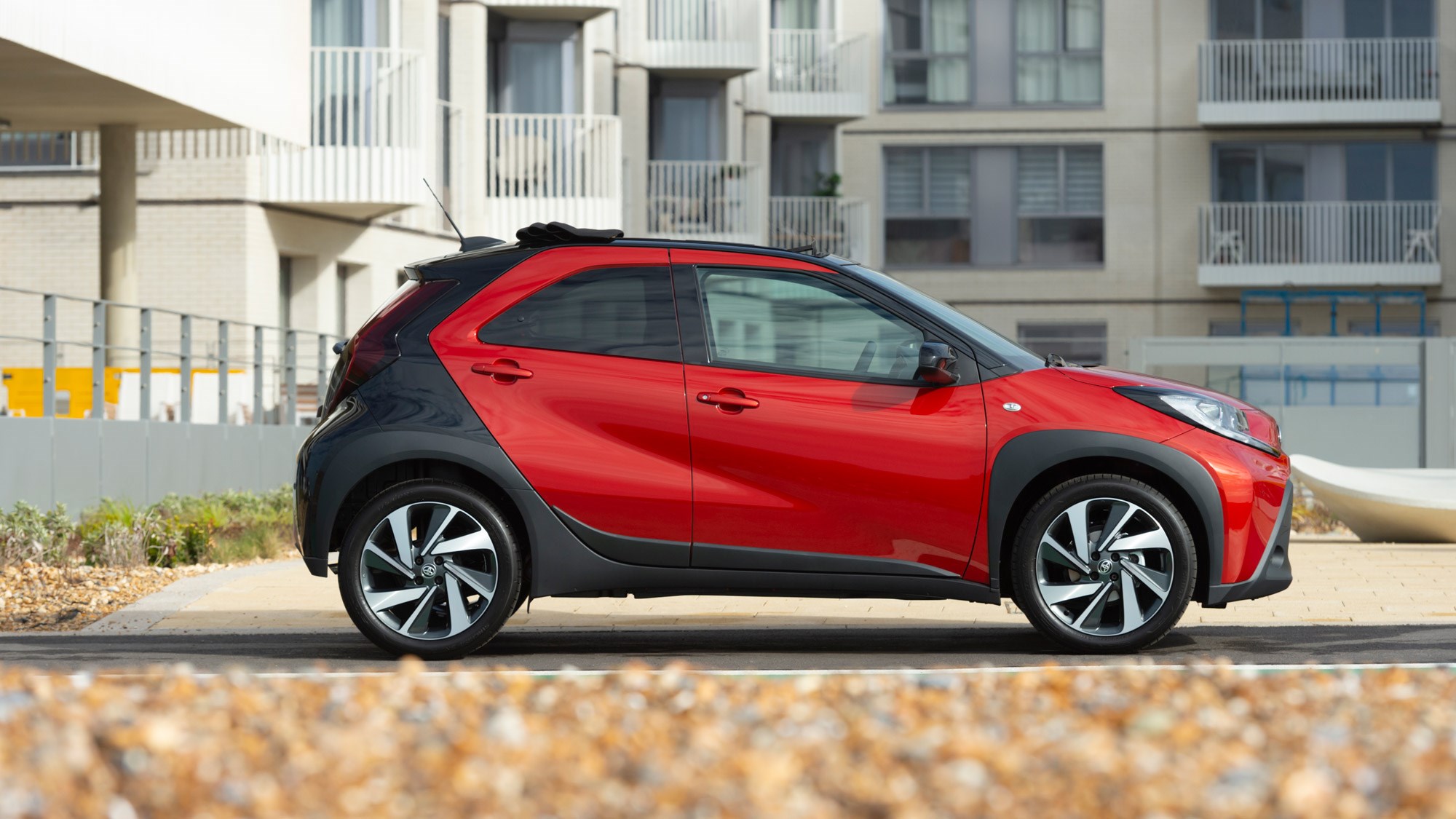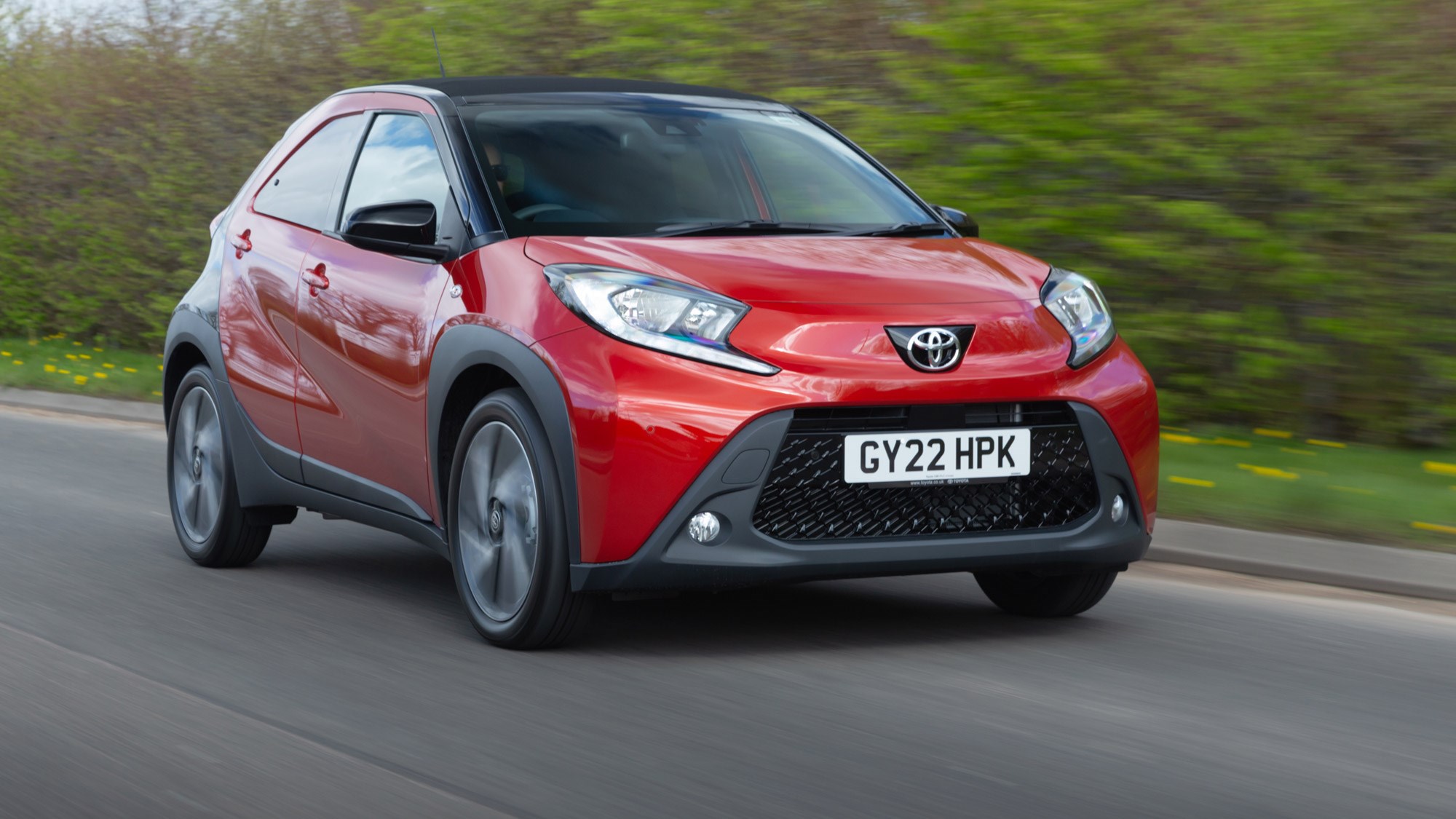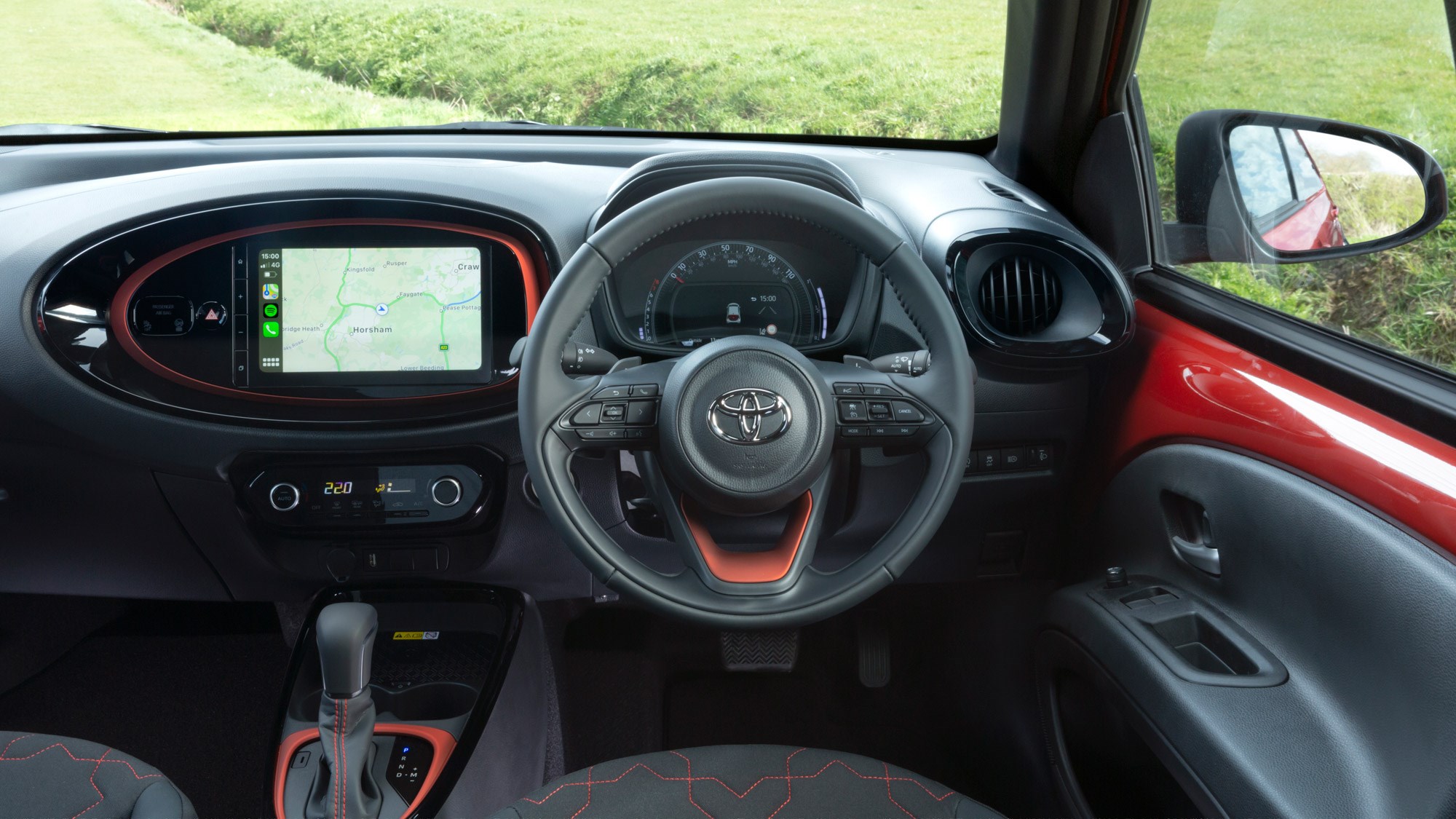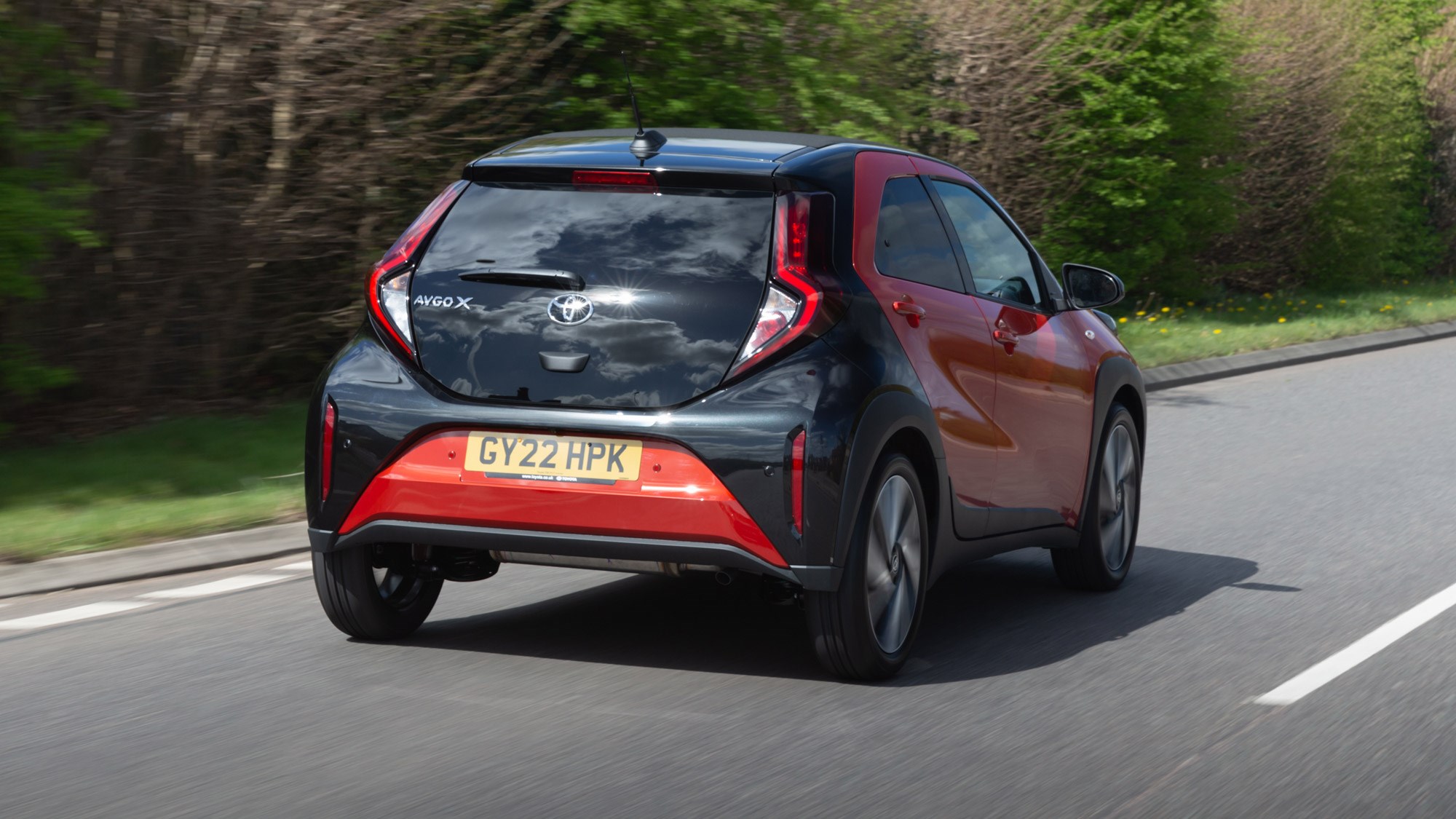► New Toyota city car now has an X
► On Yaris platform without hybrid unit
► One engine, two transmissions
The Toyota Aygo X not only gains an extra letter but a whole new attitude. Where the previous Aygo model was a proper tiddler, the replacement has grown outwards and upwards, into a mini cod-SUV.
Is this the answer to city car buyers’ prayers? We’re not banking on it…
What’s the history here?
The preceding Toyota Aygo was part of a funky-but-flawed late flowering for the city car. Along with its Peugeot and Citroën siblings, it was simple, fun transport for first-timers, empty-nesters and anyone on a budget, not to mention half the country’s take-away delivery drivers. VW, Skoda and Seat joined in the fun too, with the Up, Citigo and Mii.
But they’re all no more, following the Ford Ka+, Vauxhall Adam and Viva, non-electric Smart ForTwo, and many more down the exit ramp. The Fiat 500 (and 500e electric) and Panda remain, as do the Kia Picanto and Hyundai i10, and the Suzuki Ignis.
Those who’ve dropped out generally say it’s about their focus switching to electric – and electric cars are hard to fit into packages this small without being prohibitively expensive. But Toyota, which says it’s committed to offering a choice of power sources in various markets segments, and doesn’t want to exclude the less well off, is sticking with the category. Not out of charity, but because it sees a good business opportunity, not least because customers who might previously have gone for an Up or a Ka will end up at Toyota’s door.
Where once Toyota achieved economies of scale by splitting the costs with Peugeot and Citroën, now it achieves them by building the Aygo’s replacement, the Aygo X, on the same basic underpinnings (TGNA GA-B, platform fans) as the Yaris and Yaris Cross, and building it in the same Czech factory as the Yaris.
But enough background. What is the Aygo X? And is it actually better than the car it replaces?
A European Union
The transformation of Aygo into Aygo X is the first time that Toyota Motor Europe has handled the planning and development of a full model change. It’s based on the Aygo X Prologue, a concept designed at Toyota Europe’s design HQ in France, but the production model was designed in Brussels. Engines and manual transmissions come from Poland. It’s a Europe market-only model.

Using the Yaris chassis means the wheelbase is longer, by 90mm, but the car’s overall length is a modest 235mm longer than the Aygo. The front overhang is 72mm shorter than the Yaris hatch, and wheel size bigger at 17 or 18 inches – an important element of the X’s look.
Body width has increased by 125mm and the front seats are 20mm further apart, contributing to a 45mm increase in shoulder space. The front seats are 55mm higher than before, but headroom in the front is fine. The rear seats are as short of headroom and legroom as before, but the boot is bigger.
The car is 50mm higher, and ground clearance is up by 11mm. The luggage area has 125mm extra loadspace length.

The body is lighter than before, thanks to the use of the latest design and construction techniques – meaning no panel is thicker than it needs to be, and there isn’t a single nut or bolt anywhere that hasn’t earned its place.
The SUV look is mostly about the raised height, but the cladding and (on all but the base model) two-colour paintjobs contribute too. There’s no engineered-in off-road ability, and no all-wheel-drive option. Every Aygo X has the same engine, front-wheel drive and either a five-speed manual gearbox or Toyota’s new S-CVT, the S standing for small rather than sporty.
Behold, a £20k Aygo!
There are three trim levels, and for the first few months a Limited Edition version – which achieves the dubious distinction of being priced above £20,000.

Entry-level Pure, from £14,795 on the road, has 17-inch wheels, manual air-con, a seven-inch touchscreen and one-colour bodywork. Edge, from £16,495, has 18-inch wheels, automatic air-con, rear privacy glass, front foglights and the option of a canvas roof for £895. Exclusive spec has upgraded upholstery, wireless phone charging, LED headlights and a more advanced infotainment and safety-aids package, with the touchscreen now nine iches. Limited Edition has different 18-inch wheels, some orange flourishes and heated front seats.
It’s fun to drive, though, right?
A bit, sometimes. The Yaris undercarriage definitely improves the ride quality, and the steering is pretty decent. The CVT is the better of the two transmissions, seemingly happier working with the little three-cylinder engine than the manual is. The stick is not a smooth or precise shifter, despite a reassuringly chunky gearlever, reminiscent of the Yaris’s, as is the button-festooned steering wheel.
The key problem is the engine. It’s slow. It struggles uphill and if you’re over-ambitious in your overtakes. We’re used to three-cylinder engines feeling a little uneven, and we’re usually happy to think of it as character. Here it just makes you wonder where the fourth cylinder is.

Or the turbo. Or the hybrid unit.
Toyota’s answer is that this car has been designed to be compact and simple and light. Start adding anything to that old-at-heart engine and you’d make it heavier and bulkier, with all the knock-on effects that involves.
Similarly, although a more powerful engine hasn’t been ruled out, Toyota engineers tell us that the suspension, brakes and body have been optimised for this engine. More power would need upgrades all round, and it would soon cease to be an Aygo and become a Yaris Cross.
The one to go for
We’ve driving both transmissions and a couple of variants. They were all well equipped in terms of upholstery, electronic driving aids, audio, LED lighting and big wheels.
They also look good – it really is a striking piece of design, seen on the road – and ride quality is fine, coping well with speed bumps and potholes. Sound insulation is also ok, and the front passenger room is impressive, although the view out is not great, front or back, and the driver can’t see the front of the nose. The turning circle is an impressively tight 4.7 metres.
From the off, however, the CVT makes a huge difference to the overall experience. It’s still faintly annoying, in the way that all such transmissions are, but it makes good use of what little the engine has to offer. The manual, by contrast, is not a pleasure to use, and it constantly feels like it’s fighting to extract something from the engine that just isn’t there.

The canvas roof is also a real plus point. Closed, you forget it’s there. Open – just hold a button, like opening a glass sunroof – it really enhances the driving experience. Or at least it does on a sunny day in Barcelona, where it lets in more of the sights, sounds and smells of that fine city, without blasting you with wind.
The problem here is that you can spend more than £20,000 getting a high-spec Aygo X. And this does not feel like a £20k car.
Toyota Aygo X: verdict
If the pillars of any city car are compact size, nippy performance and low cost, the Aygo X is pretty borderline. Yes, its styling, ride quality and equipment levels redeem it to some extent. And the remaining opposition is far from perfect. But that puny engine, increased price and hopeless rear seating area are significant fails.
Given Toyota’s resources, and its strong track record with small cars, this should have been better.